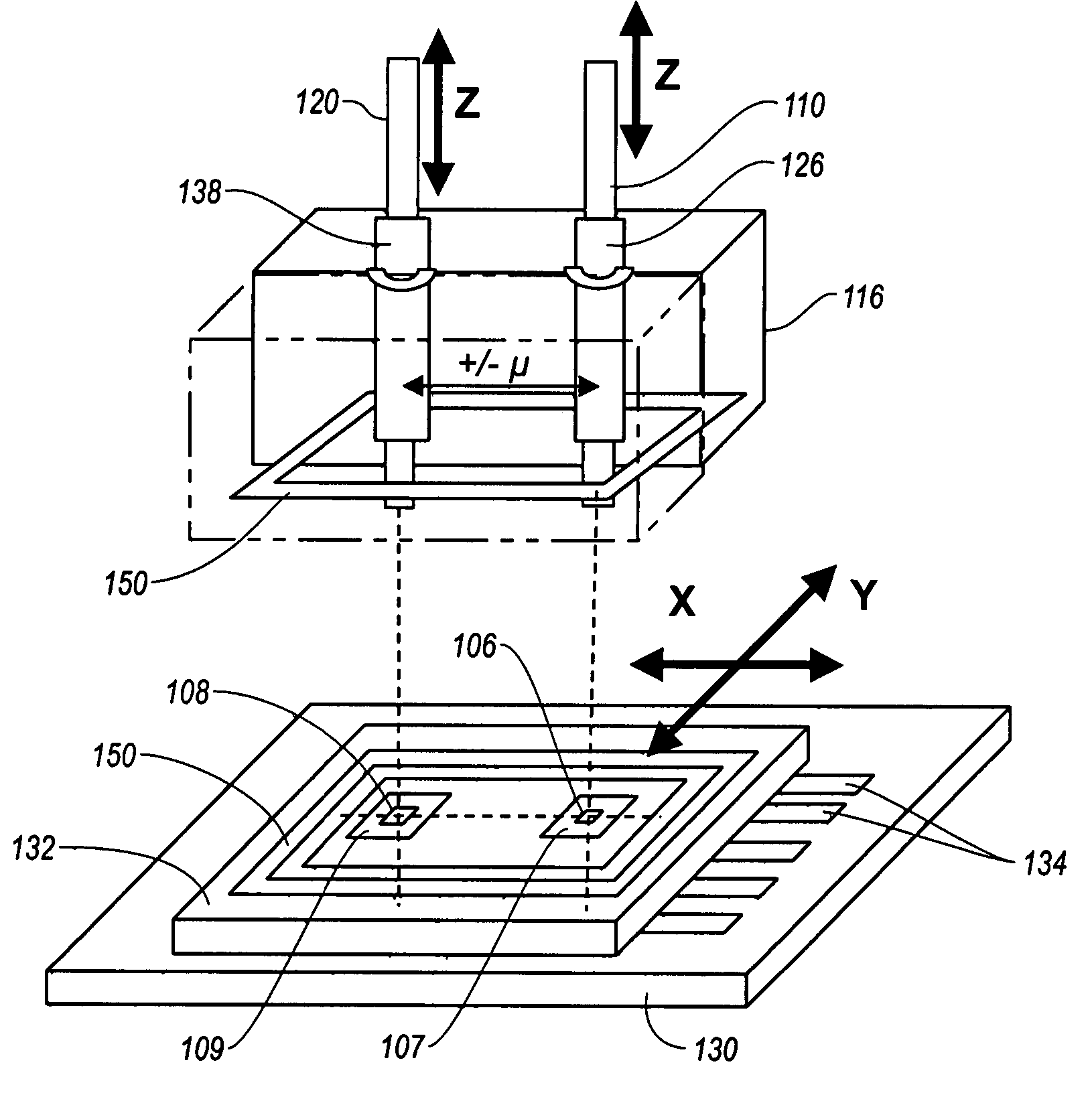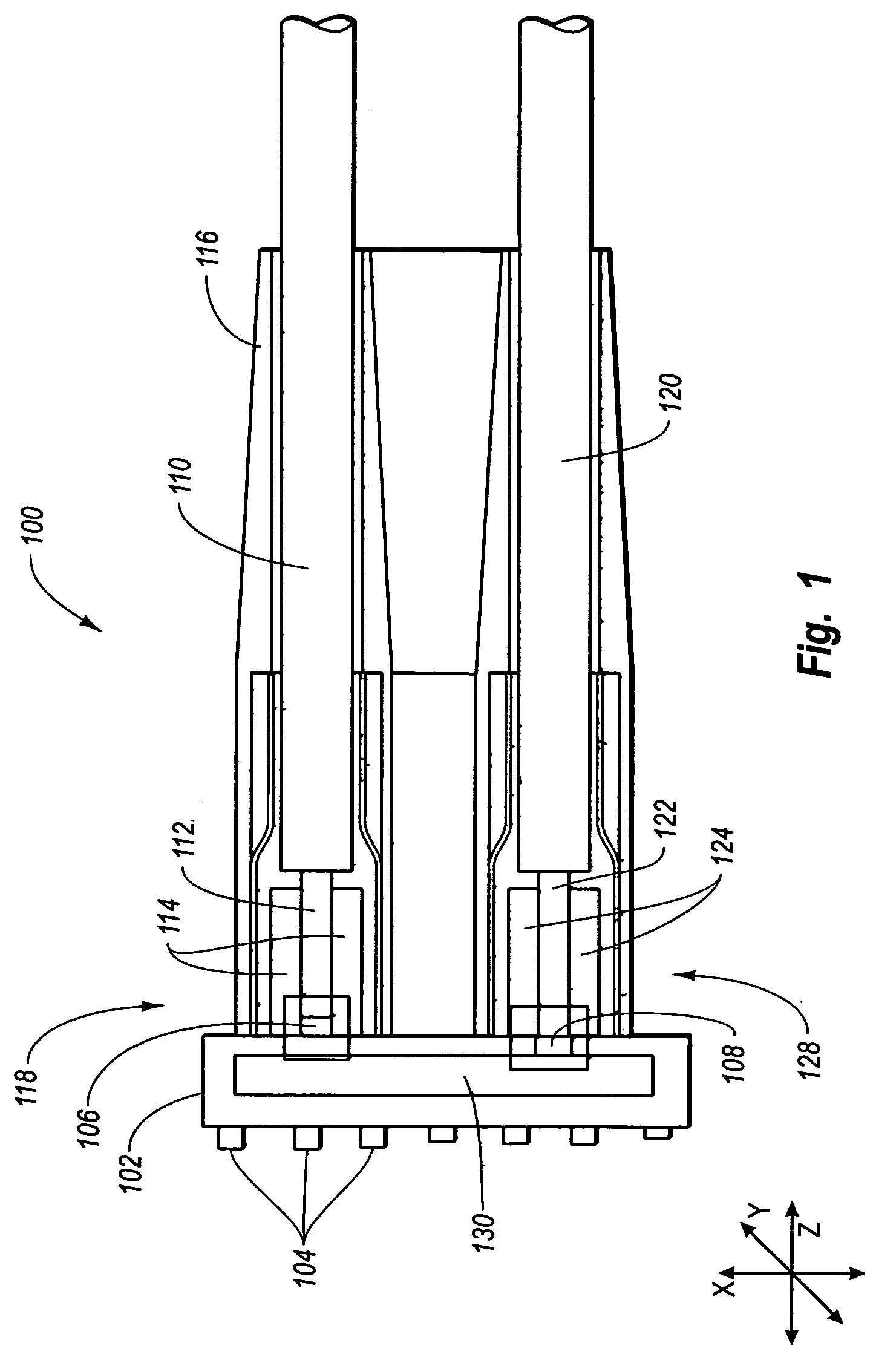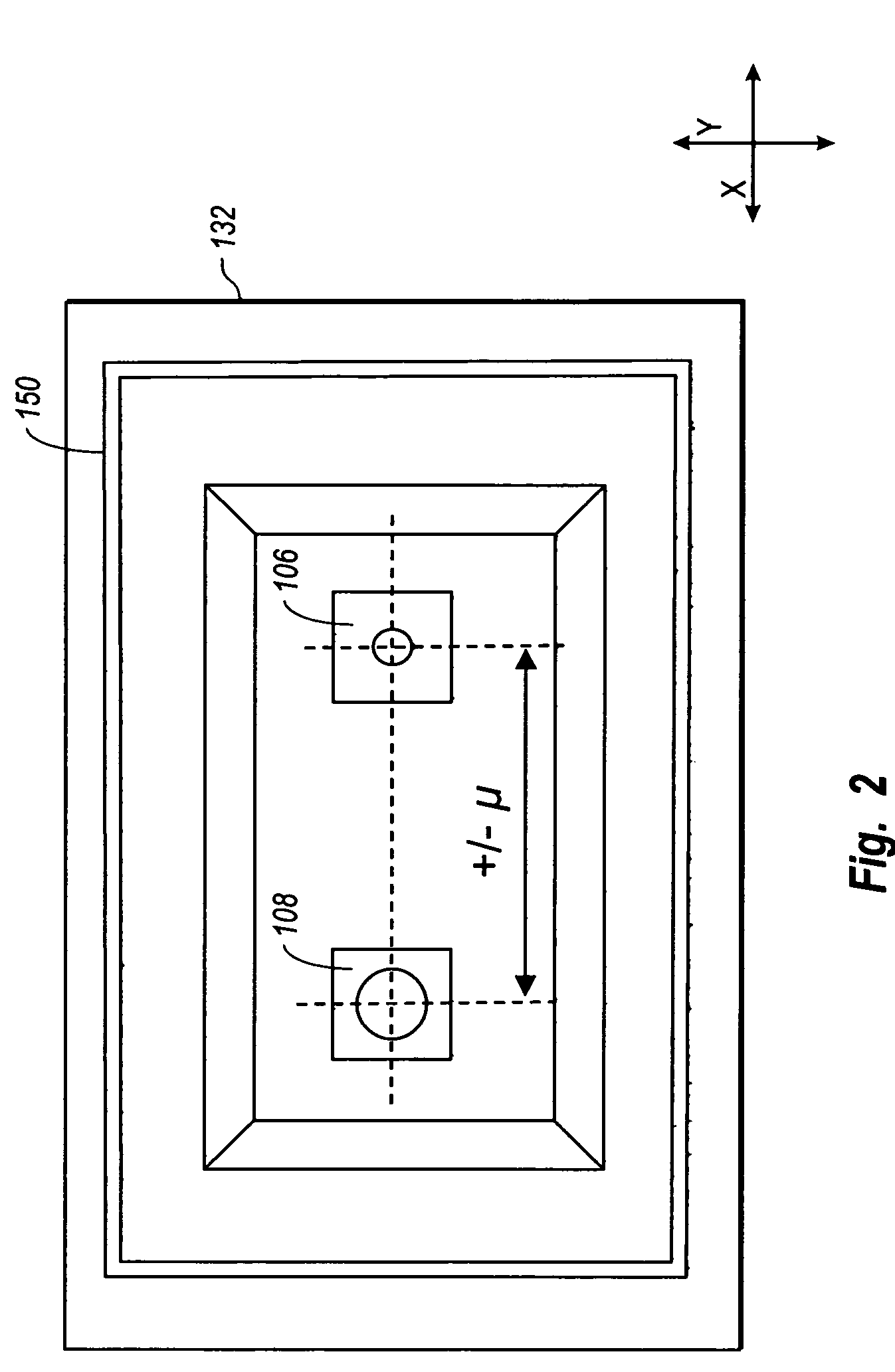Optical connectors for electronic devices
a technology of optical connectors and electronic devices, applied in optics, instruments, optical light guides, etc., can solve the problems of limiting factors, overpowering data transfer apparatuses, and large digital signals, so as to avoid manufacturing costs typically associated with optical connectors, the output speed of the cable is no longer a limiting factor, and the effect of reducing the cost of optical connectors
- Summary
- Abstract
- Description
- Claims
- Application Information
AI Technical Summary
Benefits of technology
Problems solved by technology
Method used
Image
Examples
Embodiment Construction
[0015] The present invention addresses one or more of the foregoing, and other, problems in the art by replacing much of the metallic wiring in conventional digital data transfer connectors with optical fiber. In particular, exemplary embodiments of the present invention include optical cables having an optical transceiver embedded within the electrical connection interface, such as a USB, HDMI, or DVI without using a lens between the optical fiber and optical transceiver components.
[0016] For example, in accordance with one implementation of the present invention, an electrical connector interface, such as a USB, HDMI, or DVI connection interface includes a built-in optical transceiver having a Transmit Optical Sub-Assembly (“TOSA”) positioned therein. The TOSA includes a Vertical Cavity Surface Emitting Laser (“VCSEL”), and a multi-mode optical fiber positioned relatively close to the VCSEL. The VCSEL is positioned to have a numerical aperture less than that of the corresponding ...
PUM
 Login to View More
Login to View More Abstract
Description
Claims
Application Information
 Login to View More
Login to View More - R&D
- Intellectual Property
- Life Sciences
- Materials
- Tech Scout
- Unparalleled Data Quality
- Higher Quality Content
- 60% Fewer Hallucinations
Browse by: Latest US Patents, China's latest patents, Technical Efficacy Thesaurus, Application Domain, Technology Topic, Popular Technical Reports.
© 2025 PatSnap. All rights reserved.Legal|Privacy policy|Modern Slavery Act Transparency Statement|Sitemap|About US| Contact US: help@patsnap.com



